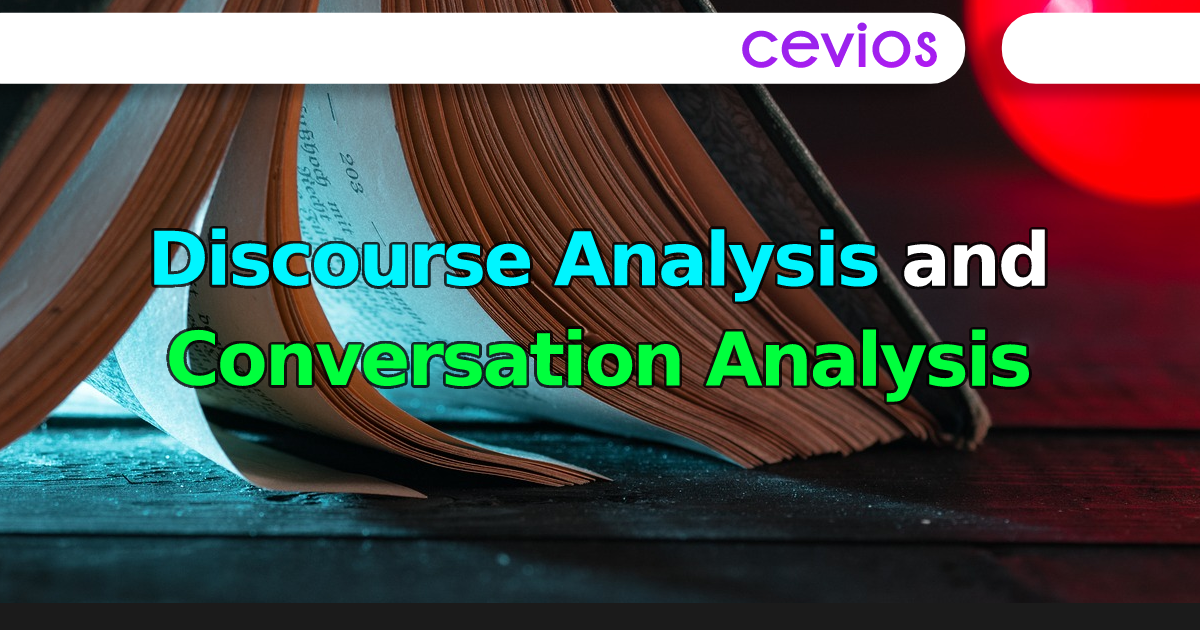Discourse Analysis and Conversation Analysis
Concluding Comments: Discourse analysis means doing analysis
A word is in order to remind the reader that this account of discourse analysis has been selective. Each example, in the sections above, elbowed its way past a dozen equally significant competitors. Some styles of analysis were crowded out entirely, and a longer chapter may well have found space for interpersonal phenomenological analysis (Smith, 2004), psychoanalytically-oriented Marxist critical discursive psychology (Parker, 2002); Foucauldian discursive psychology (Wetherell & Edley 1999); free-association narrative inquiry (Hollway and Jefferson, 2000); and action-implicative discourse analysis (Tracy 2005), among others. And I ought to say that many working discourse analysts claim no specific rules beyond the four canonical DA features of looking for social action in natural data, non-literally understood in its co-text. Indeed some discourse analysts have made an explicit virtue of keeping their independence from restrictive technicality. An eloquent defence of this way of thinking is Billig’s case in favour of critical scholarship over narrow method (Billig, 1988, 1999). It is better, on his argument, to have the core discourse analytic sentiments in mind, be guided by a critical spirit, and to avoid particular methodological practices which might miss as much as they catch.
However, whether one flies under the flag of a particular kind of discourse analysis or sails alone, it is not the case that “anything goes”. The editor of one of the principal, indeed defining, journals of the field sounds a clear warning in his editorial instructions: “Articles should provide a detailed, systematic and theoretically based analysis […]. It is insufficient to merely quote, summarise or paraphrase such discourse” (Teun van Dijk, in the instructions on ‘Preferred Papers for Discourse & Society’ which has appeared in the journal since March 2002). A useful expansion of that injunction can be found in a joint paper by Antaki, Billig, Edwards and Potter (2002) who, although as individual authors vary in their theoretical allegiances, nevertheless insist together that, as they put it, ‘discourse analysis means doing analysis’. Any discourse analyst who claims to be analysing, they argue, must ‘add value’ to what is readable or hearable in the words straight off, beyond simple paraphrasis or glossing; they must be able to back up their claims with some evidence grounded in the words used or warrantably not used; and they must reach their conclusions by argumentative steps available to a fair-minded fellowscholar.
To use a discourse analysis ‘method’, or not, and which method to use, is not a simple matter of bloodless fashion; there are strong forces at work which push new methods onto the agenda (and indeed resist them). I haven’t been able to do justice to such forces in this chapter; for an excellent recent survey of the general ebb and flow in the tides of discourse methods, see de Beaugrande’s useful short account (de Beaugrande, 1997), Wood and Kroger’s book-length overview (Wood and Kroger, 2000) and Denzin and Lincoln’s thoughtful introduction to their recent Handbook of Qualitative Research (2005). Discourse analysis is a particularly unsettled method of working in the social sciences – probably because, to its adherents, who want to understand (and sometimes unmask) social action, the stakes are high.

